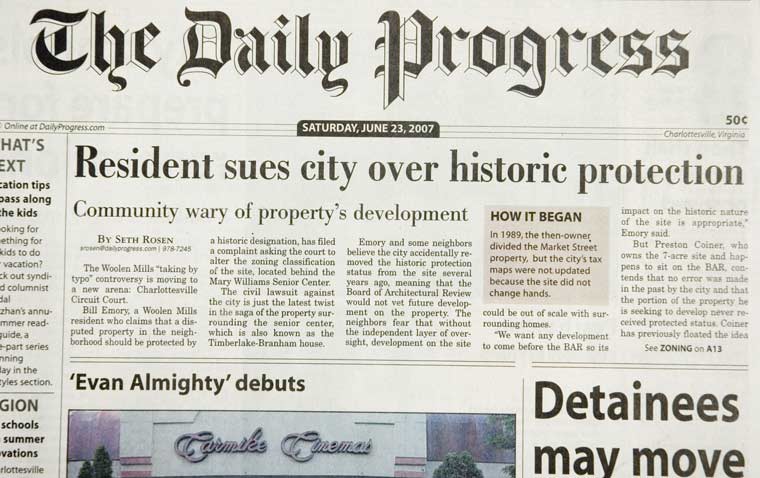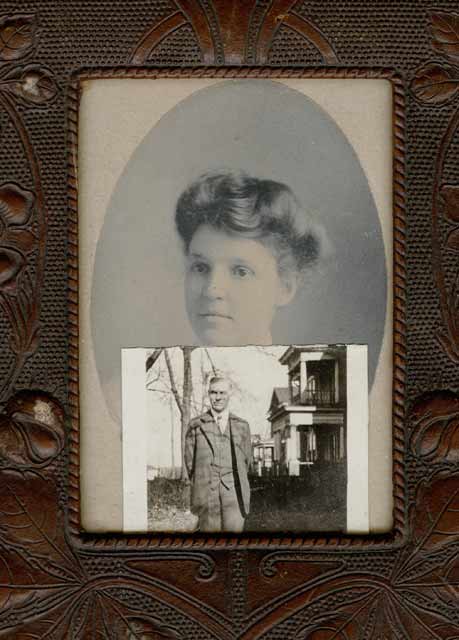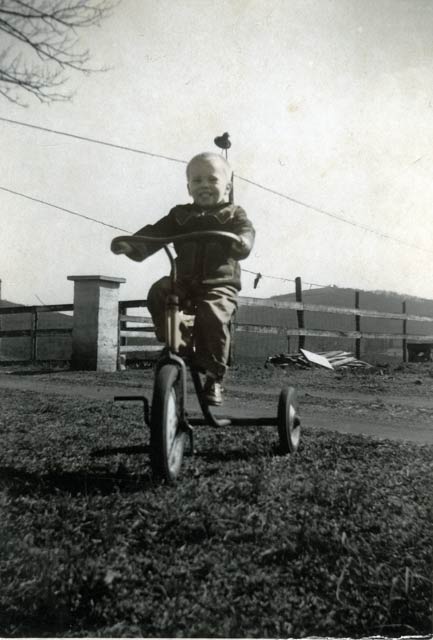headline

click here to read text of Daily Progress June 23, 2007 article
Maps
The Daily Progress continues its excellent coverage of the Timberlake-Branham "taking by typo" issue. Its an ongoing story, which is complicated to the point that a few supplemental comments are in order.
"Emory and some neighbors believe the city accidentally removed the historic protection status from the site several years ago."
We, the concerned neighbors, do not believe that 75% of the 7 acre protective zoning overlay was removed by accident. Zoning is a conscious, legislative act which must follow procedures as outlined by law. We believe that the 7 acres continues to be protected because the proper procedures were not followed. The City of Charlottesville is the proponent of the zoning by accident argument.
"A letter written by zoning administrator Read Brodhead in February stated that a "technical mistake" might have caused the parcels to lose their protected status, a position Coiner and some others dispute."
The zoning determination written by Read Brodhead didn't contain the word "might". Brodhead said that a technical mistake caused the removal of the historic designation. (click here to see letter)
"Emory brought his case to the Board of Zoning Appeals..."
One of the issues in this case has been that of "standing". Someone who has been affected by the purported loss of the zoning overlay has to ask for corrective action. There are many people who have been affected and will be affected if the City fails to address the "taking by typo" loop-hole. Formally, this case has my name on it, "William Emory v. City of Charlottesville". But informally this case is "Concerned Citizens v. City of Charlottesville", a class that includes regional, state and nationwide supporters.
"Next, Emory petitioned the City Council to consider his case and change the site's zoning classification."
To date, the neighborhood has not petitioned Charlottesville City Council regarding the Individually Protected Property status of the seven acres.
"Emory said he's disappointed that he had to file a lawsuit in order to coerce the city into fixing what he believes was a clerical error."
co-erce
1. to compel by force, intimidation, or authority, esp. without regard for individual desire or volition: They coerced him into signing the document.
2. to bring about through the use of force or other forms of compulsion; exact: to coerce obedience.
3. to dominate or control, esp. by exploiting fear, anxiety, etc.: The state is based on successfully coercing the individual.
We are the supplicants here. There is definitely no "coercion" afoot. We hope that the City will correct a clerical error which, if upheld, has serious import for all citizens of Charlottesville.
I would urge you to think both about fairness to the parties here and what the most minimum due process requires, which is notice and an opportunity to be heard. And then also to think about the precedent and the way in which this kind of taking by typo would really threaten and jeopardize all of our ability to trust the stability of the records.
--Anne Coughlin, speaking before the BZA during the 4/19/07 appeal
Labels: government, Timberlake-Branham


